متن انگلیسی درباره محرم با ترجمه ی فارسی
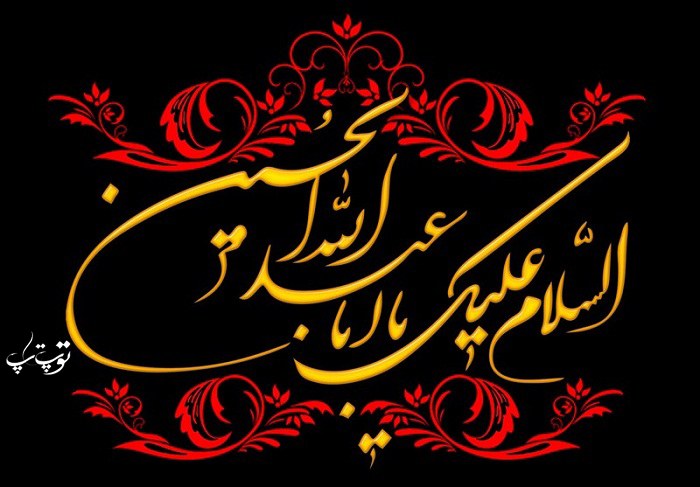
The first month of the Islamic year, Muharram, is the focus of annual lamentation rituals performed especially by Shi˓a Muslims in honor of Husayn b. ˓Ali, the prophet Muhammad's grandson, who died in battle in 680 c.e. at Karbala (Iraq).
محرم، ماه اول سال اسلامی، محور اصلی مراسم عزاداری سالانه است که به ویژه توسط مسلمانان شیعه به افتخار حسین بن علی ، نوه پیامبر اسلام ،که در سال 680 ق در جنگی در کربلا (عراق) درگذشت انجام می شود
muharram
The first month of the Islamic year, Muharram, is the focus of annual lamentation rituals performed especially by Shi˓a Muslims in honor of Husayn b. ˓Ali, the prophet Muhammad's grandson, who died in battle in 680 c.e. at Karbala (Iraq). Besieged by soldiers loyal to the caliph Yazid b. Mu˓awiya, who sought to prevent Husayn from gaining political power, Husayn died on ˓Ashura, the tenth day of Muharram. Family members accompanying him were killed or subjected to imprisonment and humiliation. Commemoration of the Karbala martyrs' sufferings during the yearly mourning season (from the first of Muharram to the twentieth of the month of Safar, with ˓Ashura comprising the focal date) serves to help define Shi˓a communal identity
محرم، ماه اول سال اسلامی، محور اصلی مراسم عزاداری سالانه است که به ویژه توسط مسلمانان شیعه به افتخار حسین بن علی ، نوه پیامبر اسلام ،که در سال 680 ق در جنگی در کربلا (عراق) درگذشت انجام می شود. توسط سربازان وفادار خلیفه یزیدبن معاویه که به دنبال جلوگیری از به دست آوردن قدرت سیاسی حسین بود محاصره شد. حسین در روز عاشورا ، روز دهم محرم درگذشت. اعضای خانواده اش که همراه او بودند کشته شدند و یا تحت حبس و تحقیر قرار گرفتند. بزرگداشت رنج های شهدای کربلا در ایام سوگواری سالانه (از اول محرم تا بیستم ماه صفر) در تعریف هویت جمعی شیعه کمک می کند.
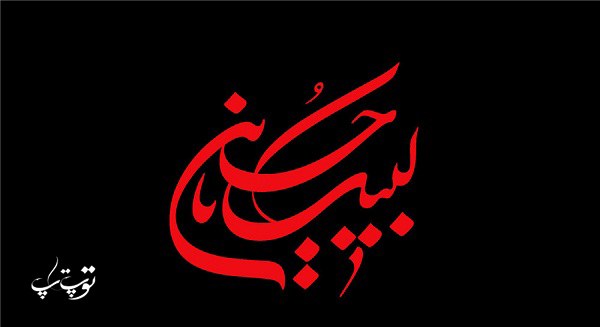
The events that took place on the tenth of Muharram in the year 680 changed forever the character of this month by making it a month of mourning, at least for the Shiʿa. On that date, Husayn—the grandson of the Prophet Muhammad and the third Imam of Shiʿite Islam—was brutally killed on the battlefield of Karbala. In this battle Husayn's sons, male relatives, and followers also perished. The women of his encampment were taken as captives to Caliph Yazid in Damascus. This tragic event overshadows any other event in that month. Husayn's ordeal started on the first of Muharram, when he and his party were intercepted by Yazid's troops, and continued even after his death, with the captivity of the Karbala survivors. Although the tenth of Muharram (known as Ashura ), is the actual date of Husayn's death, the mourning has been extended to cover the whole month.
اتفاقاتی که در دهم محرم در سال 680 رخ داد ، با تبدیل این ماه به یک ماه عزاداری ، حداقل برای شیعه ، چهره ی آن را برای همیشه تغییر داد. در آن تاریخ ، حسین - نوه پیامبر اسلام و امام سوم اسلام شیعه - به طور وحشیانه در میدان نبرد کربلا کشته شد. در این نبرد فرزندان حسین ، بستگان مذکرش و پیروانش نیز هلاک شدند. زنان اردوگاهش را به عنوان اسیر برای خلیفه یزید در دمشق بردند. این واقعه غم انگیز هر واقعه دیگری را در آن ماه تحت الشعاع قرار می دهد. مصیبت حسین در اول محرم آغاز شد ، هنگامی که راه او و حزبش توسط لشکر یزید قطع شد و حتی پس از مرگ وی ، با اسارت بازماندگان کربلا ادامه یافت. اگرچه دهم محرم (معروف به عاشورا) ، تاریخ واقعی درگذشت حسین است ، اما عزاداری ها برای پوشاندن کل ماه تمدید شده است.
For the Shiʿa, the Muharram tragedy of Husayn is the greatest act of suffering and redemption in history. It acquired a timeless quality, and, therefore, apart from the yearly Muharram observances, the Shiʿa continually try to measure themselves against the principle of the paradigm of Husayn whenever they regard themselves as deprived, humiliated, or abused. In fact, one of the main slogans during the Islamic revolution in Iran (1978/79) chanted by the crowds or scribbled as graffiti on town and village walls was "Every day is Ashura; every place is Karbala; every month is Muharram." This same slogan was intoned on radio and television and was graphically depicted on posters and even postage stamps during Iran's eight-year (1980–1988) war against Iraq.
برای شیعه ، فاجعه محرم حسین بزرگترین جایگاه رنج و رستگاری در تاریخ است. این اتفاق خصوصیتی را بدون اینکه محدود به زمان باشد به دست آورد و بنابراین ، به غیر از مشاهدات سالیانه محرم ، شیعیان بطور مداوم سعی می کنند خود را در برابر اصل الگوی حسین هر زمان که خود را محروم ، تحقیر یا سوء استفاده قلمداد کنند ، بسنجند. در حقیقت ، یکی از اصلی ترین شعارهای انقلاب اسلامی در ایران (1978/79) که توسط جمعیت شعار می داد یا به عنوان نقاشی های دیواری روی دیوارها در شهر و روستا نوشته می شد "این بود که" هر روز عاشورا است ؛ هر مکان کربلا است ؛ هر ماه محرم است. " همین شعار در رادیو و تلویزیون به صدا درآمده بود و در طول جنگ هشت ساله ایران (علیه 1980) علیه عراق ، بطور گرافیکی بر روی پوسترها و حتی تمبرهای پستی ارسال شده بود.
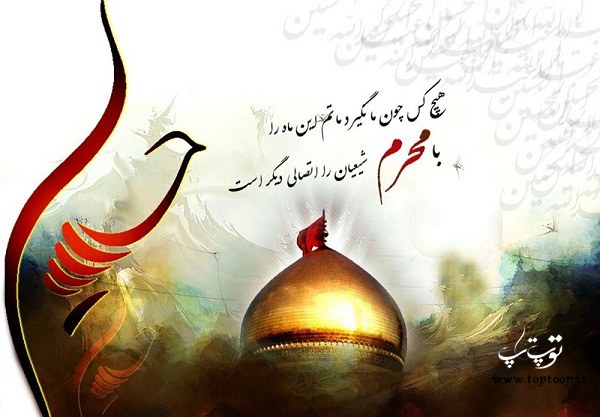
The Muharram commemoration of Husayn's passion and martyrdom is charged with unusual emotions throughout the world's Shiʿa communities. Even the followers of Sunni Islam and the members of other religions who live among the Shiʿa are greatly affected by these commemorative rituals. That participation in the annual observance of Husayn's suffering and death is considered an aid to salvation on the day of judgment provides an additional incentive for Shiʿa to engage in the many mourning rituals. Elaborate Muharram observances were already carried out in the fourth Islamic century in Baghdad during the reign of Muʿizz al-Dawla of the Shiʿite Buyid dynasty. Many Muharram rituals have developed since, and although they may differ in form from one locality to another, passionate participation in them is universal.
بزرگداشت محرم از شور و شهادت حسین و عواطف غیر عادی در سراسر جوامع شیعه در جهان برخوردار است. حتی پیروان اسلام اهل سنت و اعضای مذاهب دیگر که در میان شیعیان زندگی می کنند ، بسیار تحت تأثیر این آیین های بزرگداشت قرار گرفته اند. این که شرکت در مشاهده ی سالانه رنج و مرگ حسین ،کمکی به رستگاری در روز قیامت می کند ، انگیزه مضاعفی برای شیعیان برای شرکت در بسیاری از مراسم های عزاداری فراهم می کند. آیین محرم قبلاً به زحمت در قرن چهارم اسلامی در بغداد و در زمان سلطنت معاذ الدوله از سلسله شیعه بیدید انجام شده بود. بسیاری از آیین های محرم از آن زمان به بعد توسعه یافته اند ، و گرچه ممکن است از لحاظ مکانی از جایی به جایی دیگر متفاوت باشند ، اما مشارکت پرشور در آنها جهانی است.
These rituals may be divided into two categories, the ambulatory and the stationary. They are primarily performed during the first ten days of Muharram, with the greatest discharge of emotions and the greatest number of rituals occurring on the day of Ashura. The most common ambulatory rite is a procession, and the participants are divided into different groups of self-mortifiers—those who beat their chests with the palms of their hands; those who beat their backs with chains; and those who wound their foreheads with swords or knives. Some mortify themselves with stones, and others carry the alam, which signify the standard of Husayn at Karbala. In Iran, in some processions, floats with live tableaux representing the scenes from the Karbala tragedy can be seen, as well as Husayn's symbolic bier, called nakhl (date palm). Nakhl is carried because, according to tradition, Husayn's beheaded corpse was carried on a stretcher made of date palm branches. Some nakhl are so large that they require more than 150 people to carry them. Processions are accompanied by bands of martial and mournful music. The most characteristic features of Muharram on the Indo-Pakistani subcontinent are the huge artistic interpretations of Husayn's mausoleum carried or wheeled in the procession. At the end of Ashura day, these structures, called taʿziya, are either cremated or buried at the local cemetery, called Karbala, or are immersed in water.
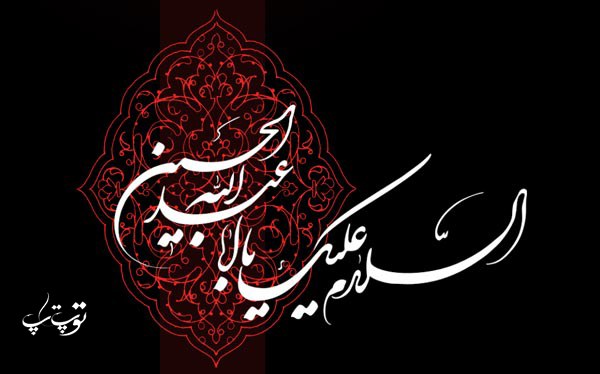
این آیین ها ممکن است به دو دسته سرپایی و ثابت تقسیم شوند. آنها در درجه اول در ده روز اول محرم انجام می شوند و بیشترین تخلیه احساسات و بیشترین تعداد مراسم در روز عاشورا رخ می دهد. متداول ترین مراسم سرپایی یک راهپیمایی است و شرکت کنندگان به گروه های مختلفی از عزاداران تقسیم می شوند - کسانی که با کف دست خود سینه خود را می کوبند. کسانی که پشت خود را با زنجیر می کوبند. و کسانی که پیشانی های خود را با شمشیر یا چاقو زخم می کنند. برخی خود را با سنگ زخم می کنند و برخی دیگر علم را حمل می کنند ، که نشان دهنده شعار حسین در کربلا است. در ایران ، در برخی از مراحل ، افرادی با نمایش زنده که صحنه هایی از مصیبت کربلا را نشان می دهد، در حرکت هستند و همچنین پیکر نمادین حسین به نام نخل (نخل خرما) دیده می شود. نخل حمل می شود زیرا طبق سنت ، جسد بریده شده ی سر حسین روی برانکاری از شاخه های نخل خرما حمل شده است. بعضی از نخل ها به قدری بزرگ هستند که برای حمل آنها به بیش از 150 نفر احتیاج دارند. روند حرکت با گروههای موسیقی رزمی و عزاداری همراه است. بارزترین ویژگی های محرم در شبه قاره هند و پاکستان تفسیرهای عظیم هنری از مقبره حسین است که در این پیاده روی حمل شده است. در اواخر روز عاشورا ، این سازه ها به نام تعزیه یا در گورستان محلی به نام کربلا آرمیده شده و یا به خاک سپرده می شوند یا در آب غوطه ور می شوند.
The Muharram observances were brought as far as the Caribbean basin in the years 1845 to 1917, when indentured laborers from India went there. Muharram is still, after carnival, the most important event in Trinidad. Although the Muharram rituals in Trinidad have more of a festive than a mourning character, the main features continue to be processions. In this case, the processions are parades of colorful cenotaphs for Husayn, called tadja. In India, the Sunni and even the Hindus actively participate in many Muharram rituals. In Trinidad as well, this is a true ecumenical event.
آیین محرم بین سالهای 1845 تا 1917 در حوالی حوضه کارائیب آورده شد ، وقتی کارگران شاغل در هندوستان به آنجا رفتند. محرم هنوز پس از کارناوال مهمترین رویداد در ترینیداد است. اگرچه آئین های محرم در ترینیداد بیشتر از یک شخصیت عزاداری است ، اما ویژگی های اصلی این روند است. تشریفات رژه ای از مقبره های خالی های رنگارنگ برای حسین به نام تادجا هستند. در هندوستان ، اهل سنت و حتی هندوها به طور فعال در بسیاری از آیین های محرم شرکت می کنند. در ترینیداد نیز ، این کاملا یک واقعه جهانی است.
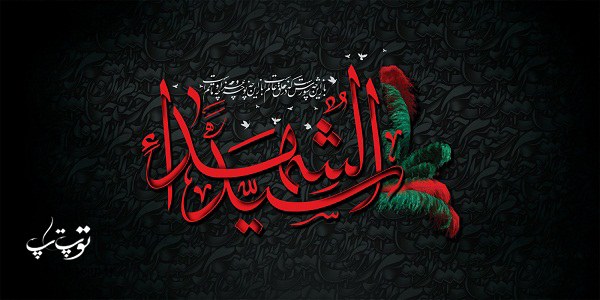
To the stationary rituals belong majalis al-aza, recitation and singing of the story of Husayn at the Battle of Karbala. In Iran, this ritual is called rawda khwani. The storyteller (called rawda khwan ) of the Shiʿite martyrology sits above the assembled crowd on a minbar (pulpit) in a black tent, under an awning, or in a special edifice (Husayniyya or takiya in Iran; ashurkhanah or imambarah in India) and brings the audience to a state of frenzy with recitation, chanting, crying, sobbing, and body language. The most unusual stationary ritual is the taʿziya of Iran—the only serious drama and theater developed in the Islamic world depicting the martyrdom of Husayn and other Shiʿite martyrs. Originally, it was performed in the month of Muharram, but now it is staged year round.
تشریفات مذهبی ثابت ،به مجالس عزا ، تلاوت و خواندن داستان حسین در نبرد کربلا تعلق دارد. در ایران ، این آیین را ردا خوانی می نامند. قصهگو (به نام ردا خوان) شیعه در بالای جمع بر روی منبر در چادر مشکی ، زیر سایه بان یا در یک بنای خاص (حسینیه یا تکیه در ایران ؛ آشورخانه یا عمارخانه در هند) نشسته است. مخاطبان را با تلاوت ، شعار دادن ، گریه کردن ، لعاب زدن و زبان بدن ، به حالت عصبی می کشاند. غیرمعمول ترین آیین ثابت تعزیه ایران است - تنها درام و تئاتر جدی که در جهان اسلام توسعه یافته و شهادت حسین و سایر شهدای شیعه را به تصویر می کشد. در ابتدا این کار در ماه محرم انجام می شد ، اما اکنون در طول سال به صحنه می رود
The Muharram processions actually served as prototypes for the massive demonstrations in Tehran and other Iranian cities during the 1978/79 revolutionary upheavals. The mixing of Muharram mourning slogans with political ones has been an old Muharram tradition. The Iranian Revolution utilized the Husayn Muharram paradigm and was carried out in accordance with the Islamic calendar. Ayatollah Ruhollah Khomeini's revolution started in Muharram on Ashura, 3 June 1963, when he delivered a speech at the Fayziya Madrasa in Qom, criticizing the internal and external policies of the shah, Mohammad Reza Pahlavi, and his government. In the article "Islamic Government," written while he taught in exile in Najaf, Khomeini states: "Make Islam known to the people, then . . . create something akin to Ashura and create out of it a wave of protest against the state of the government" (Islam and Revolution, p. 131). A few days before Muharram on 23 November 1978, in order to accelerate the revolution, Khomeini issued from Neauphlele-Château, France, a declaration called "Muharram: The triumph of blood over the sword," which was recorded in France and distributed in Iran through its network of mosques. The opening paragraph of the declaration reads as follows:
اتفاقات محرم در واقع به عنوان نمونه ای اولیه برای تظاهرات گسترده در تهران و سایر شهرهای ایران در جریان تحولات انقلابی 1978/78 بود. آمیختن شعارهای عزاداری محرم با موارد سیاسی یک سنت قدیمی محرم بوده است. انقلاب ایران از الگوی حسین محرم استفاده کرد و مطابق با تقویم اسلامی انجام شد. انقلاب آیت الله روح الله خمینی در محرم در روز عاشورا ، 3 ژوئن 1963 ، هنگامی که وی در سخنرانی در مدرسه فیضیه در قم سخنرانی کرد ، با انتقاد از سیاست های داخلی و خارجی شاه ، محمدرضا پهلوی ، و دولت وی ، سخنرانی کرد. خمینی در مقاله "دولت اسلامی" که در حالی که او در نجف به تبعید مشغول بود نوشته شده است ، می گوید: "اسلام را به مردم بشناسید ، سپس ... چیزی شبیه به عاشورا ایجاد کنید و از آن موجی از اعتراض علیه دولت ایجاد کنید (اسلام و انقلاب ، ص 131). چند روز قبل از محرم در 23 نوامبر 1978 ، برای تسریع در انقلاب ، خمینی از نئوفلله-چاته ، فرانسه ، بیانیه ای به نام "محرم: پیروزی خون بر شمشیر" صادر کرد که در فرانسه ضبط و در ایران از طریق مساجد توزیع شد. بند اول اعلامیه به شرح زیر است:
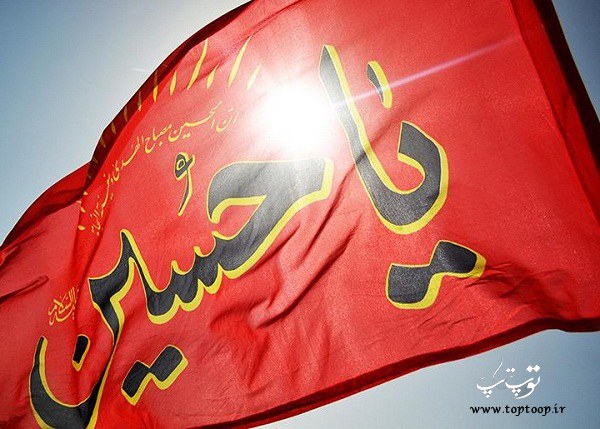
With the approach of Muharram, we are about to begin the month of epic heroism and self sacrifice—the month in which blood triumphed over the sword, the month in which truth condemned falsehood for all eternity and branded the mark of disgrace upon the forehead of all oppressors and satanic governments; the month that has taught successive generations throughout history the path of victory over the bayonet. (Islam and Revolution, p. 242)
با نزدیک شدن به محرم ، ما در حال آغاز ماه قهرمانی و حماسه و فداکاری خود هستیم - ماه ای که در آن خون بر شمشیر پیروز شد ، شهری که در آن حقیقت باطل را برای همه ابد محکوم می کند و لکه ننگ را بر پیشانی همه ستمگران و دولت های شیطانی میزند؛ ماهی که به نسلهای پیاپی در طول تاریخ مسیر پیروزی بر سرنیزه را آموزش داده است (اسلام و انقلاب ، ص 242)
Less than two months later, the shah left Iran, enabling Khomeini to return from fourteen years of exile.
کمتر از دو ماه بعد ، شاه ایران را ترک کرد و این امکان را برای بازگشت خمینی از چهارده سال تبعید فراهم کرد
Muharram affects the entire Islamic community; however, it is primarily felt among Shiʿa. Muharram could be expressed both as a mourning depression and an exuberant agitation and will to act. These expressions of Muharram can be and have been converted into political actions
محرم بر کل جامعه اسلامی تأثیر می گذارد. اما در درجه اول در بین شیعیان احساس می شود. محرم می تواند هم به عنوان یک عزاداری غمگین و هم یک تحریک و اراده عمل گرایانه بیان شود. این حالت محرم می تواند به اقدامات سیاسی تبدیل بشود
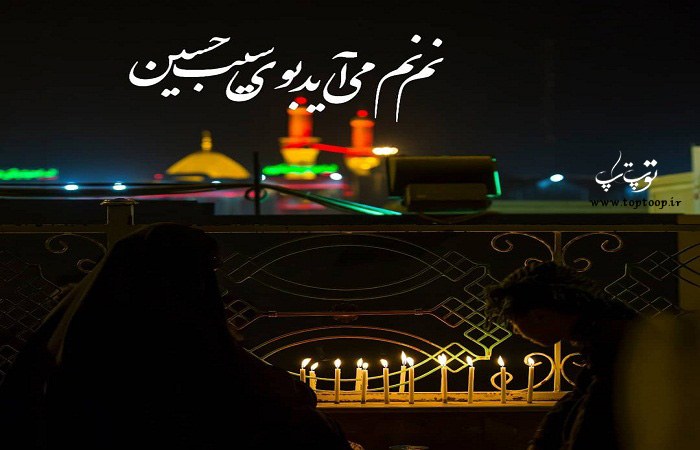
تقریبا همه متن ها ترجمه هستند از جاهایی که چیزی جز تاریخ اندک اطلاعی از قیام امام حسین ندارن بهتر بود از متنی استفاده بشه که گویای حقیقت کربلا اونم از زبان شیعیان باشه
با سلام و تشکر توی متن ها نوشته شده شهادت امام حسین در سال 680 بوده که اشتباهه لطفا اصلاح بفرمایید